
William Blake (1757–1827) — English printmaker, painter and poet of the Romanticism era, who unlike many other artists wrote not large-scale oil paintings, but watercolors on paper, and chose rather peculiar themes - his own visions, biblical and historical subjects.
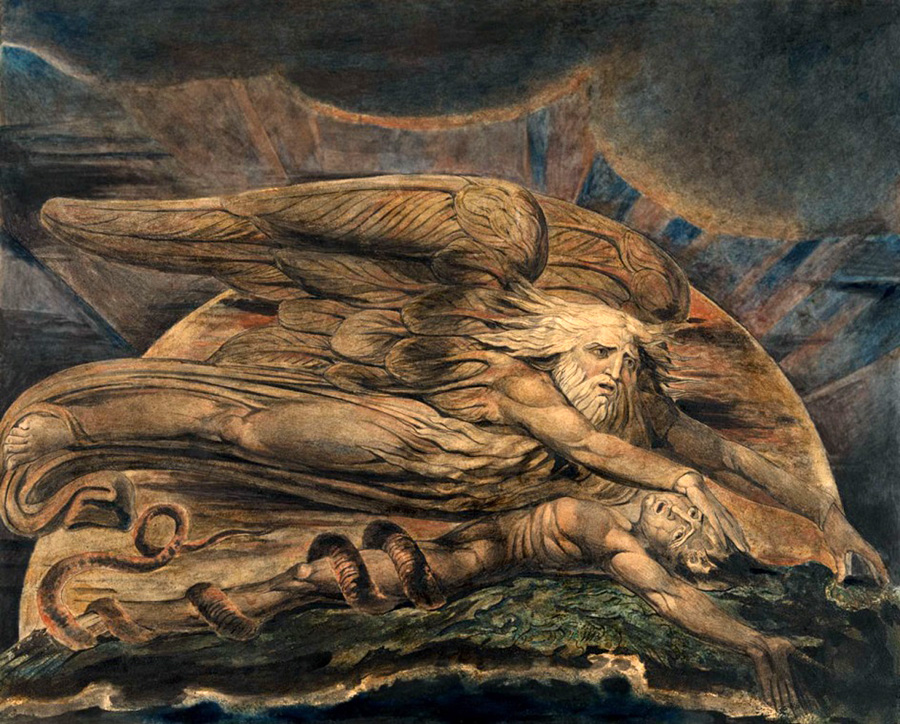
Elohim and the creation of Adam
Blake took everything to extremes, and his work was not always understandable to ordinary people and art critics, which is why they often did not take him seriously, and even thought he was mad. Well, how can a person have some visions and why draw them? An artist should paint pictures that are understandable, that do not provoke rejection, that obey all the laws of beauty, and not his own fantasies. If he is an adult, and he is preoccupied with nonsense, it is probably better to stay away from him and his work.
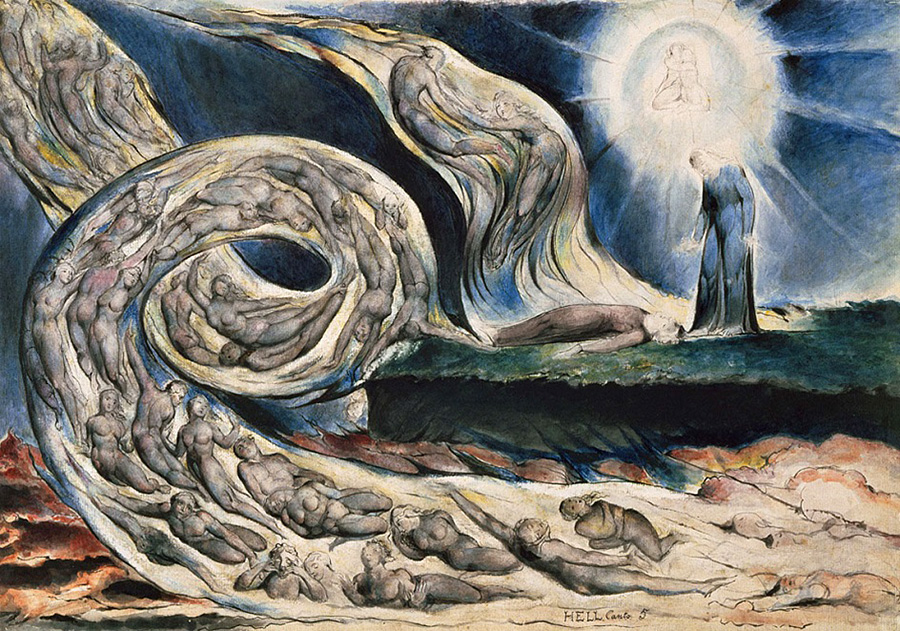
A whirlwind of lovers
But Blake painted such pictures for a reason. He believed that human civilisation was descending into chaos, and everything that was happening at the time was buried deep in the memory of an impressionable young man, affecting his perception of the world and his psyche. At the same time, however, he was a talented poet and painter, although it was watercolour painting and printmaking that was the main activity of his life, and it is only in retrospect that we can appreciate the full extent of his work. Then it is worth trying to unravel the hidden meaning of his work, which was often quite profound, to the delight of art historians. In this article we will talk about William Blake's life and his amazing artwork, which was not understood by his contemporaries, but only appreciated later.
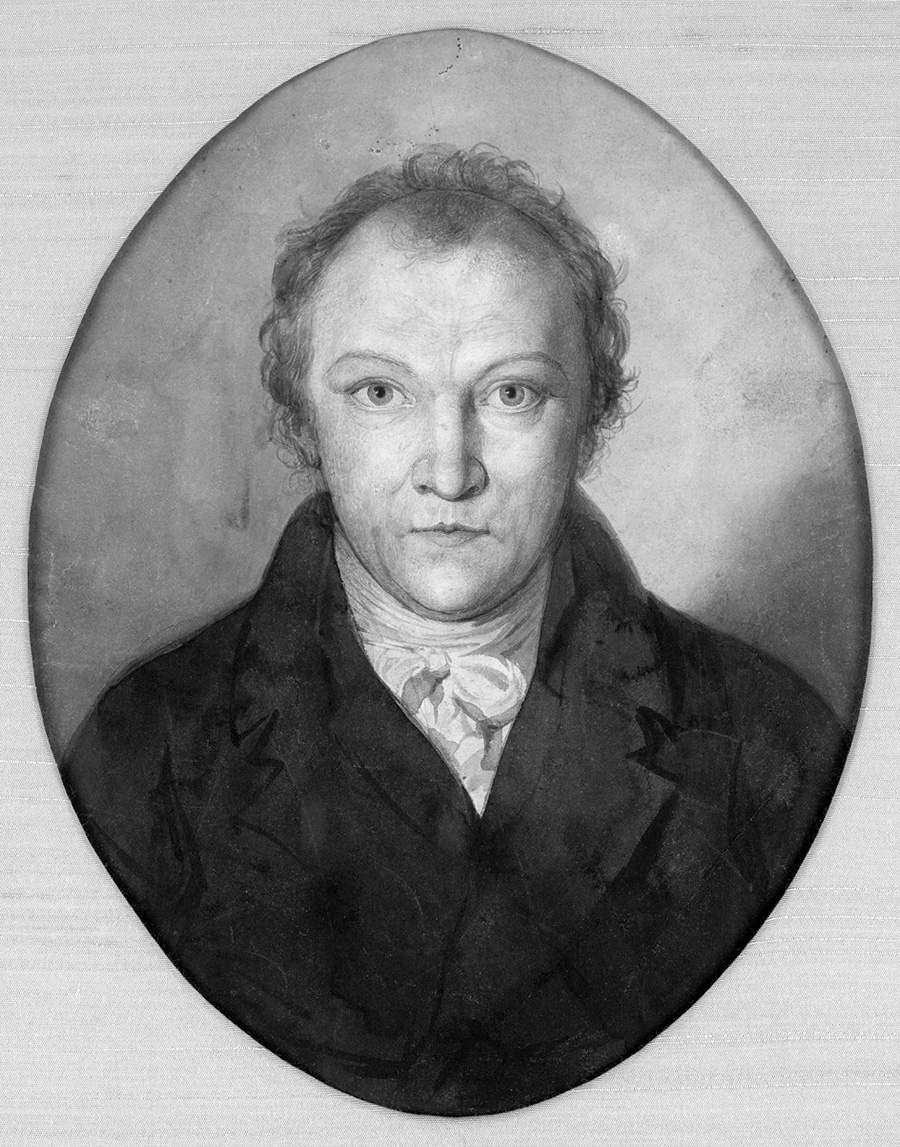
William Blake. Self-Portrait.
William's father was the owner of a haberdashery shop and brought up William and his five other children strictly, decently and exclusively at home. William liked this very much, as it allowed him to avoid going to school. In those days, however, not all children were educated; the poorest parents simply could not afford it, and the wealthy preferred to employ private tutors for their children. Blake's lack of education did not hold him back. All sorts of visions began to appear to Blake very early on - at the age of four. He spoke of God looking in his window, and when he was a little older he mentioned the tree with the angels sitting on it and the prophet Ezekiel walking in the field.

Creator of the Universe
The boy himself took them for granted, he willingly told adults about them, and in a completely indifferent tone, as if all this was in the order of things. They thought that such visions were ordinary children's fantasies and did not take them seriously. However, Blake himself did not forget about them, in his opinion, every person is able to see the otherworldly from childhood, but with age they simply lose this ability. However, if it is systematically developed and trained, then you can admire such visions all your life.
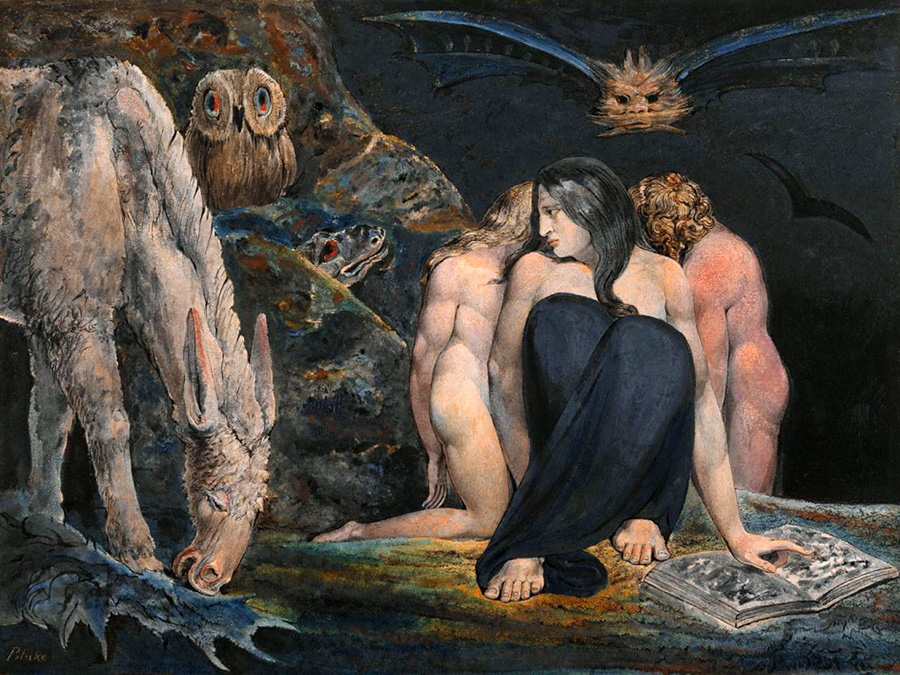
Night of Joy Enitharmony
William was determined to become an artist - a rather unusual ambition for a shopkeeper's son. His father did not argue with him, judging sensibly that a young man with such fantasy and imagination had a direct route to becoming an artist, to his own benefit. But the fees were very high and William's father could not afford them.
Eventually an engraver was found who agreed to teach William for a more reasonable fee, but then William himself acted up - at the interview he told his father: "I don't like his face, it looks like he's going to be hanged soon". Of course, after such a tirade, there was no talk of studying, but the engraver was indeed hanged, albeit 11 years later.
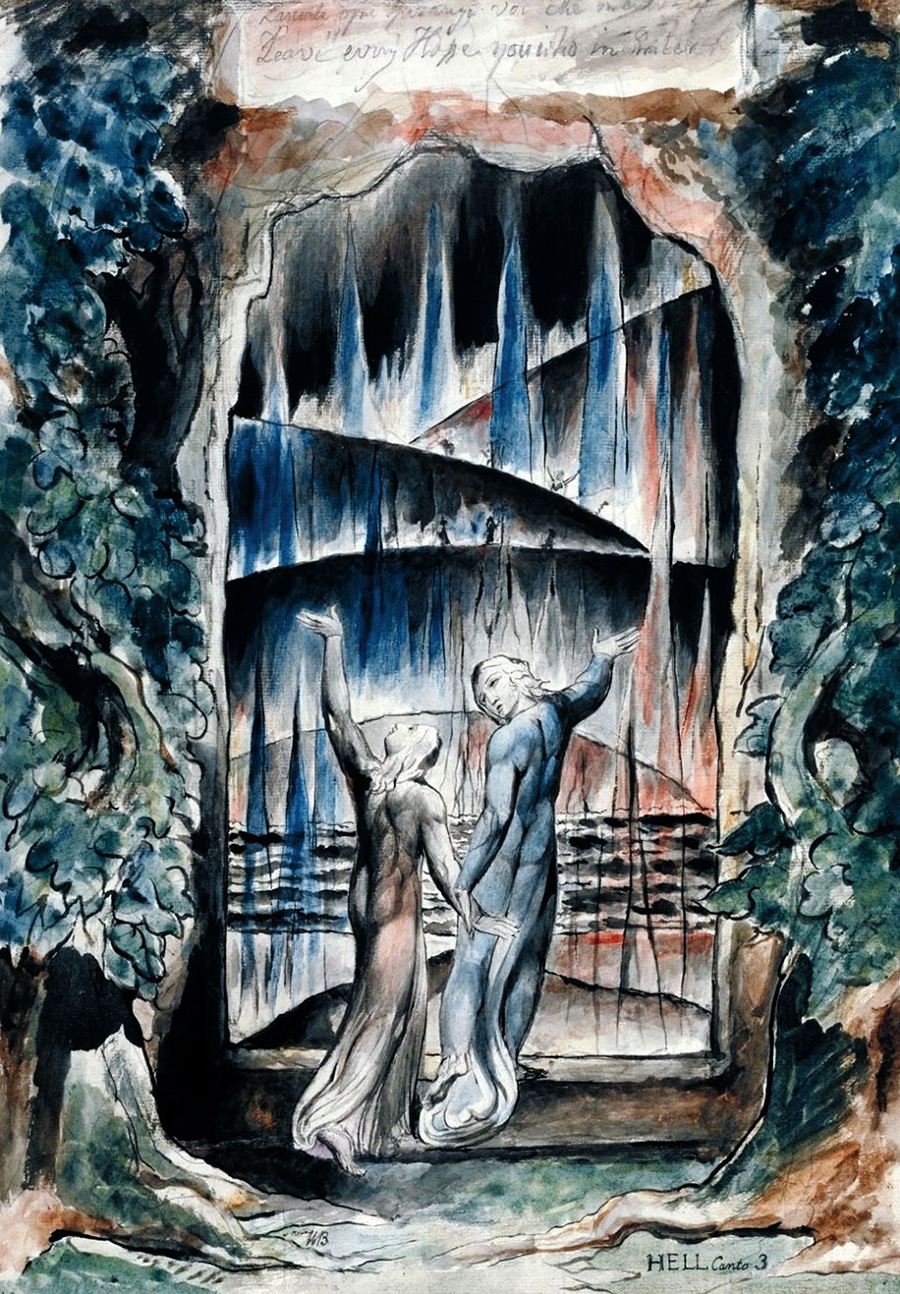
Dante and Virgil at the Gates of Hell.
But William found a teacher, William Ryland, a responsible and thorough man, an excellent and respected engraver. William studied hard and was very successful. As a result, he was even commissioned to make engravings for a very popular book of the time, "Tombstones of Great Britain" by Richard Gough, which was a clear recognition of his skill.
In 1779 William became an independent engraver. As long as he was copying the work of other engravers, or already known monuments and paintings, no one questioned him. But when William began to create his own engravings, they were called "the fruit of a perverted imagination" - they were too unusual, they did not fit into any framework.

Nebuchadnezzar
However, he produced excellent illustrations for Chaucer's Canterbury Tales, which improved his financial situation and made him famous as an excellent engraver.
And two years later, William married Catherine Bushe, an ordinary village girl who fully supported her husband. She even had the same visions as William, but Catherine was not bothered by his oddities, on the contrary, she was sure that he was an unrecognized genius.
Life went on as usual - William wrote engravings, his wife helped to color and sell them - but soon William's brother Robert died of tuberculosis. William spent the last days of Robert's life sitting at his bedside and later told everyone that he saw his soul clapping its hands in joy as it finally left the exhausted body. He also claimed that his brother had given him a new, special method of printing which enabled him to produce books himself.

Newton
In 1803 another episode occurred which could have ended very sadly for William. One day he found a drunken dragoon, John Schofield, in his garden. Enraged by such a flagrant violation of private property, William threw the drunk out, but could think of nothing better than to slander the artist - he is said to have cursed the King of England himself. The charge was extremely serious, but William was acquitted on the grounds of impunity, and he left the court to the cheers of the crowd.

Jacob's Ladder
Blake presented several of his paintings to the public - he wanted to become famous not only as an printmaker, but also as an artist. However, they were seen by a local journalist, Robert Hunt, who did not like either the paintings themselves or Blake's statements about Rubens. He wrote about this in a local weekly and Blake was talked about as a "harmless madman". Orders became much less frequent and the artist barely made ends meet.
But the last years of William's life were quite successful, he moved to London, and he had his own students and admirers, who were no longer afraid of the artist's unusual paintings. However, real recognition came after the artist's death - during his life he was either ignored or criticized, and after his death, many obituaries appeared in all the newspapers, and hundreds of people volunteered to see him off on his final journey. He was called the painter of the unknown and began to be considered the most important artist and poet in the history of English art. But Blake himself did not care about this, like Amedeo Modigliani, he remained an unrecognized genius whose talent was appreciated only after his death.
Buy handmade goods or modern art you can on artAlebrio - is an international marketplace for people who want to create, sell, buy and collect unique items and art - buy the best with us artAlebrio.com.
By confirming your order you unconditionally accept these General Conditions of Sale